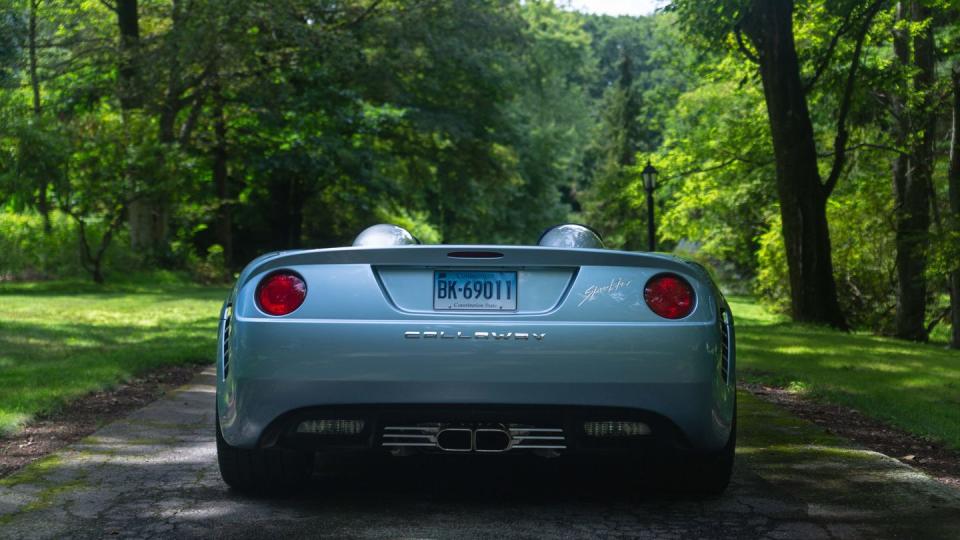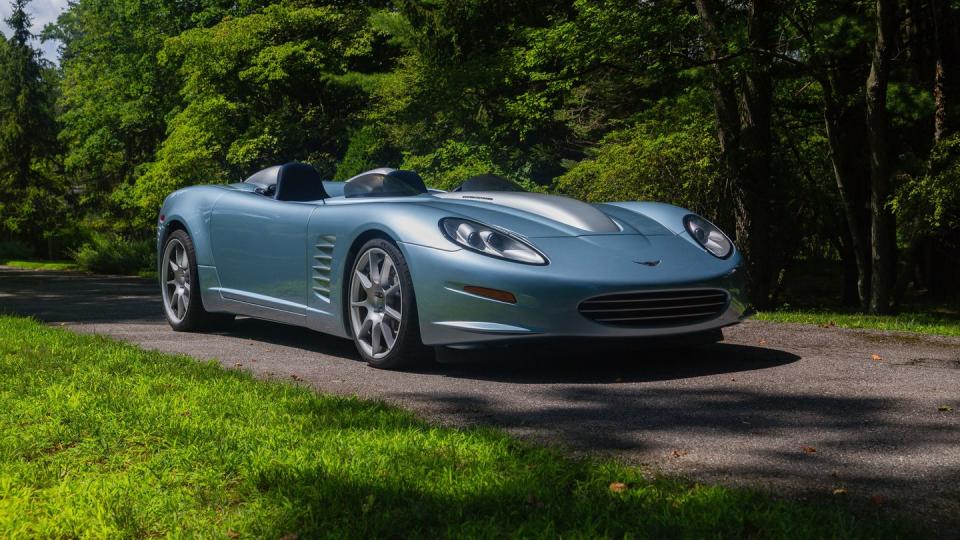We Drive the One of a Kind 2007 Callaway C16 Speedster

"Hearst Magazines and Yahoo may earn commission or revenue on some items through these links."
The Concours d'Elegance in Monterey, California, has seen more unveilings than the dressing room of a bridal shop, and as the 2023 Monterey Car Week recedes in the rearview, we thought we'd look even further back at a notable launch of the past. In 2007, Callaway Cars revealed the C16 Speedster, a uniquely styled, 700-hp variation on a C6 Corvette. The Speedster's $350,000 list price when new (over $515,000 in today's money), not to mention its roofless, fair-weather mission, go some way toward explaining its unintended rarity: only one sold, ever. The coupe and roadster versions went on to sell in the predicted double-digit volumes. But their creator, Ely Reeves Callaway III—speaking only weeks before his recent death—described the Speedster to its new owner as a certified money loser for the company. Still, it nevertheless remained, in his estimation, "the coolest car" his crackerjack outfit ever built.

Based in Old Lyme, Connecticut, Callaway first caught the public's eye in the late 1970s by selling atypically well-engineered turbocharger kits for the E21 BMW 3-series, followed in 1983 by a batch of twin-turbo Alfa Romeo GTV6s authorized by the factory. His fledgling firm most famously grew its business by amping up Corvettes and other GM hardware. It made headlines in 1987 with twin-turbo Corvettes, including a Sledgehammer model that could—in 1988, mind you—top 250 mph. Astounding performance figures aside, the firm's enduring commitment to quality and attention to detail was so great that, for a time, General Motors authorized the sale of Callaways at selected Chevy dealers, honoring in full the factory warranty on the modified cars. By 1994, Callaway-constructed SuperNatural Corvette race cars were achieving podium finishes at LeMans, while GT3 racing versions of the C7 Corvette raced competitively into the 2020s.
Named after his trailblazing father, Ely Reeves Callaway Jr.—a successful textile executive and vintner who, late in life, launched the world's best-selling line of golf clubs—Callaway III would become one of America's most successful aftermarket tuners, though he'd never cotton to the term. "We don't call ourselves a tuner," he told Road & Track. "A tuner takes an aggregate of parts that already exist, bolts them on the automobile, and calls it a customization. Everything we make is made specifically for the car. And we manufacture it ourselves."

The C16 is perhaps one of the greatest proofs of this self-assessment, for it is far removed from any regular production Corvette. When it was purchased new by Ken Lingenfelter, a wealthy collector who that same year acquired his distant cousin John's Lingenfelter Performance Engineering (another sophisticated and well-regarded not-a-tuner of GM iron), the C16 had seen but 600 miles pass beneath its bespoke carbon-fiber/magnesium wheels, carbon ceramic brakes, and adjustable coil-over Eibach suspension when it was put up for auction on Bring a Trailer in 2022. Failing to sell at a high bid of $252,000, it returned to Lingenfelter's collection. The following year, a well-heeled collector who chooses to remain anonymous but whose Euro-centric garage residents tend to wear Porsche and Ferrari badges, found himself strangely beguiled by the Speedster. This despite his wryly noting that "It's as practical as a chocolate teacup." A deal was struck, details of which he preferred not to disclose. The car went to Connecticut's Miller Motorcars for a light reconditioning, and two weeks before Callaway's unfortunate passing, the Speedster's current owner dined with the maestro, where he learned of the affection its creator still held for the car.
Designed by Callaway's de facto in-house designer, Montreal-based and U.K.-trained Paul Deutschman, every one of the Speedster's fiberglass body panels was new. Still in mint condition—finished in azure blue, with a contrasting silver hood bulge and seats covered in high-grade dark blue German leather with contrasting Alcantara inserts—the vehicle reads as elegant and tasteful despite an inherent extrovert swagger highlighted by its conspicuous lack of side glass and a proper windshield.

 Yahoo Autos
Yahoo Autos 